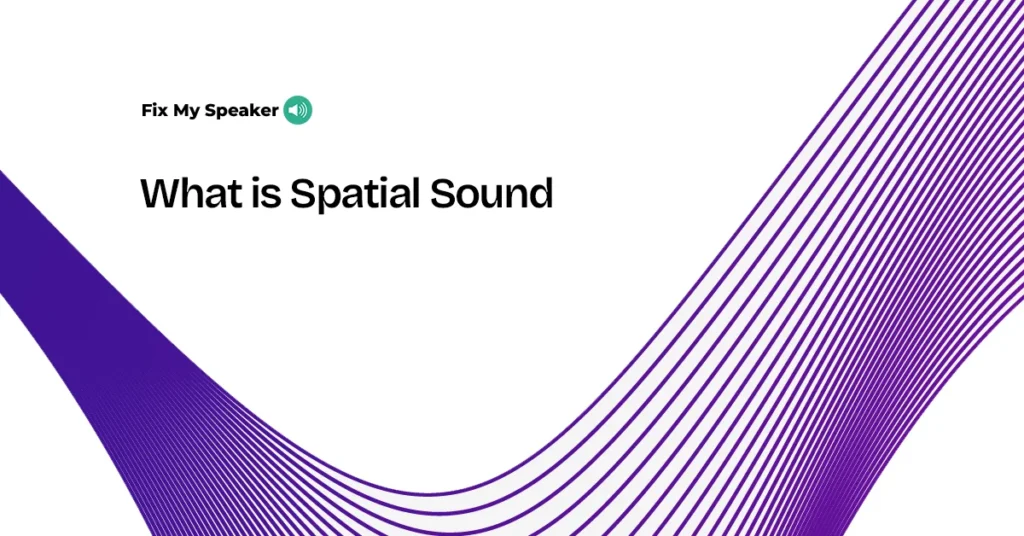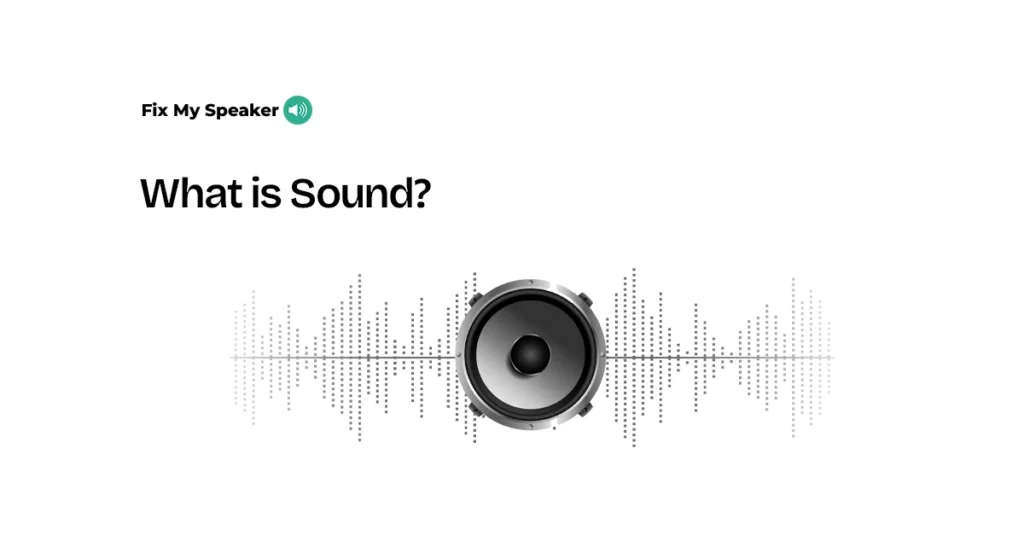Spatial sound is a fascinating advancement in audio technology that goes beyond traditional stereo and surround sound. It creates a three-dimensional soundscape, where you can sense audio coming from all directions—above, below, in front, behind, and on the sides. This technology mimics the way we naturally hear sounds in the real world, providing an immersive and realistic listening experience.
Unlike stereo sound, which is limited to left and right channels, spatial sound uses sophisticated techniques to position audio more precisely in a virtual 3D space. This capability has become increasingly important in areas like gaming, virtual reality (VR), and cinematic experiences, where creating a realistic environment is crucial.
What is Spatial Sound?
Spatial sound, also known as 3D audio, is designed to replicate how sound behaves in a natural environment. It allows sound to be perceived as coming from specific locations around the listener, not just from speakers or headphones. For example, if someone speaks behind you in a virtual environment, spatial sound enables you to hear their voice as though it’s genuinely coming from that direction.
Traditional stereo sound is linear; it’s about spreading sound between two channels—left and right. Spatial sound, however, incorporates depth, height, and movement, making the experience much more dynamic. The listener doesn’t just hear a sound from a general direction; they can sense the distance and position of the sound, offering a new level of realism.
This is particularly useful in entertainment industries. In a movie, spatial sound can make it feel as though footsteps are approaching from behind, or in a game, you can pinpoint an enemy’s location based solely on sound cues. This creates an immersive experience that standard audio setups simply cannot match.
How Does Spatial Sound Work?
Spatial sound relies on advanced algorithms and processing techniques to simulate how sound waves interact with the environment and reach our ears. The process starts by analyzing the properties of a sound wave—its frequency, amplitude, and phase. By adjusting these properties, the sound can be manipulated to create the illusion of distance and direction.
One key element of spatial sound is the concept of head-related transfer function (HRTF). HRTF is a mathematical model that simulates how sounds reach your ears from different positions. It accounts for how your head, ears, and body shape alter the sound before it reaches your eardrum. By applying this model, spatial sound systems can accurately position audio around you in a virtual 3D space.
Additionally, spatial sound takes into account the acoustic properties of the environment. For instance, sound in an open field behaves differently than in a small room. By simulating these properties, spatial sound can replicate how audio would realistically behave in various settings.
For playback, spatial sound systems often use specialized speakers or headphones. These devices use multiple drivers (mini-speakers within the headset) or software-based algorithms to recreate the 3D sound experience. The result is a more immersive, true-to-life sound environment that enhances the listener’s sense of presence.
Applications of Spatial Sound
Spatial sound is widely used across various industries, making it a versatile tool for creating engaging and lifelike experiences.
- Gaming: In video games, spatial sound is a game-changer. Players can hear the exact location of in-game events, such as footsteps, gunfire, or environmental sounds. This accuracy not only enhances realism but also gives players a strategic advantage. For instance, knowing the direction of an enemy’s footsteps allows a player to react quicker, leading to a more immersive and competitive gaming experience.
- Virtual and Augmented Reality (VR and AR): Spatial sound is essential for virtual and augmented reality experiences. In these environments, realistic soundscapes are crucial for immersion. Whether it’s a virtual concert, a training simulation, or an AR-based museum tour, spatial sound ensures that users feel fully engaged in their virtual surroundings.
- Movies and Cinematic Experiences: In the film industry, spatial sound adds a new dimension to storytelling. It makes viewers feel like they’re part of the scene, rather than simply observing it. For instance, in a horror movie, spatial sound can intensify fear by making eerie noises appear as though they’re coming from different corners of the room.
- Music Production: Musicians and sound engineers are increasingly exploring spatial sound to create more engaging audio tracks. By positioning instruments and vocals in a 3D space, they can produce songs that feel more immersive, offering listeners a richer auditory experience.
- Live Events: Concerts, theater productions, and live performances are incorporating spatial sound to enhance audience engagement. This technology allows sound engineers to control how audio moves within the venue, creating a more dynamic and realistic sound environment for the audience.
Differences Between Spatial Sound, Surround Sound, and 3D Sound
It’s easy to confuse spatial sound with other related technologies like surround sound and 3D sound, but there are important differences:
| Aspect | Spatial Sound | Surround Sound | 3D Sound |
|---|---|---|---|
| Definition | Creates a 360-degree sound environment with depth, height, and direction. | Uses multiple speakers to produce sound from specific directions. | Simulates sound coming from all directions using stereo or binaural techniques. |
| Sound Source Location | Accurate positioning in 3D space (above, below, around). | Limited to horizontal plane (left, right, front, back). | Typically focuses on left-right and front-back perception. |
| Technology | Utilizes HRTF models, environment simulation, and complex algorithms. | Relies on multiple speakers placed around the listener. | Often uses stereo and binaural recordings to simulate 3D effects. |
| Applications | VR, gaming, advanced cinematic experiences. | Home theaters, traditional cinema setups. | Headphones, basic virtual environments. |
Spatial sound stands out by offering more precise and comprehensive sound positioning compared to traditional surround sound systems, which focus primarily on horizontal directionality. Additionally, spatial sound integrates vertical dimensions, providing a fuller, more natural sound environment.
How to Experience Spatial Sound at Home
Experiencing spatial sound is more accessible than ever, even from the comfort of your home. With advancements in audio technology, many consumer devices now support spatial sound, bringing immersive audio experiences to everyday users.
One of the easiest ways to experience spatial sound is through headphones designed for 3D audio. Many modern headphones come with built-in spatial sound capabilities, allowing you to enjoy an immersive listening experience without needing specialized equipment. These headphones use multiple drivers or software algorithms to recreate a 3D sound environment, simulating sound from different directions and distances.
For a more comprehensive setup, you can explore home audio systems that support spatial sound. Certain soundbars and speaker systems are equipped with Dolby Atmos or DTStechnology, which are popular formats for spatial sound. These systems use upward-firing speakers to bounce sound off the ceiling, creating the sensation of audio coming from above, as well as around you.
Streaming platforms and gaming consoles also provide easy access to spatial sound. Many movies, TV shows, and games now include spatial sound tracks, which you can experience if your device supports it. Whether it’s a Netflix show with Dolby Atmos or a game with spatial audio options, you can unlock the full potential of immersive sound with just a few clicks.
For a complete experience, consider optimizing your room for spatial sound. Reducing echo, balancing speaker placement, and minimizing external noise can greatly enhance how you perceive 3D audio at home. With the right equipment and settings, you can turn your living room into a cinematic or gaming hub that offers the same level of immersion as a professional setup.
Conclusion
Spatial sound represents a significant leap in how we perceive audio. By going beyond traditional stereo and surround sound, it opens up new possibilities for creating immersive and realistic listening environments. Whether you’re exploring a virtual world, watching a movie, or listening to music, spatial sound brings you closer to the action, making the experience more engaging and lifelike.
The rise of spatial sound in gaming, VR, and entertainment reflects its growing importance in delivering high-quality audio experiences. As technology continues to advance, spatial sound will likely become an even more integral part of how we experience sound in various contexts. Embracing this technology means stepping into a new era of audio that feels more natural, dynamic, and true to life.


